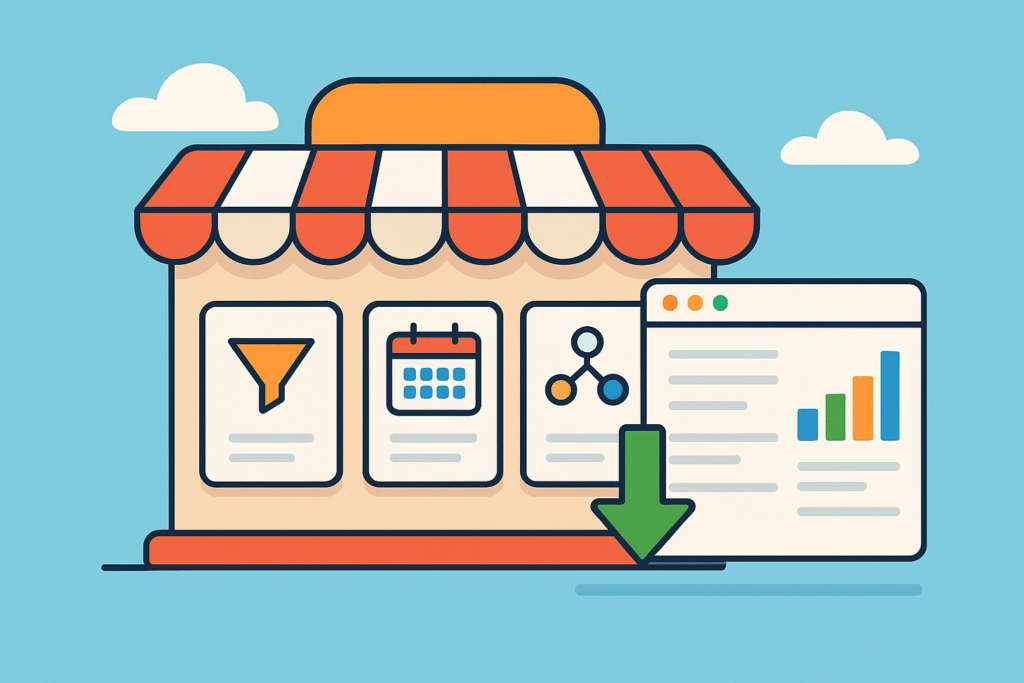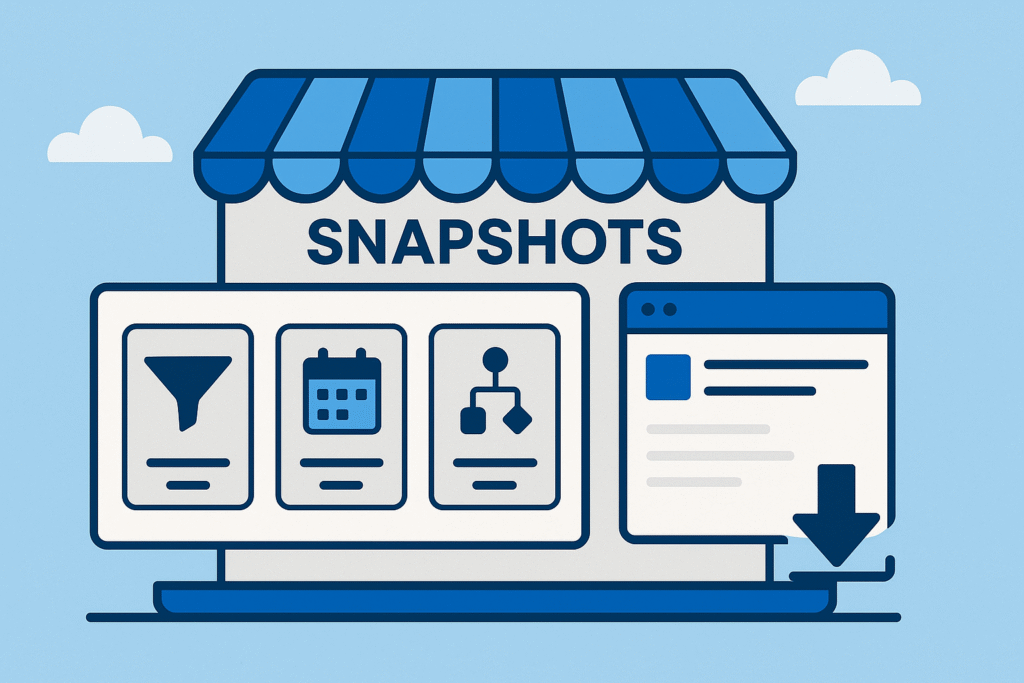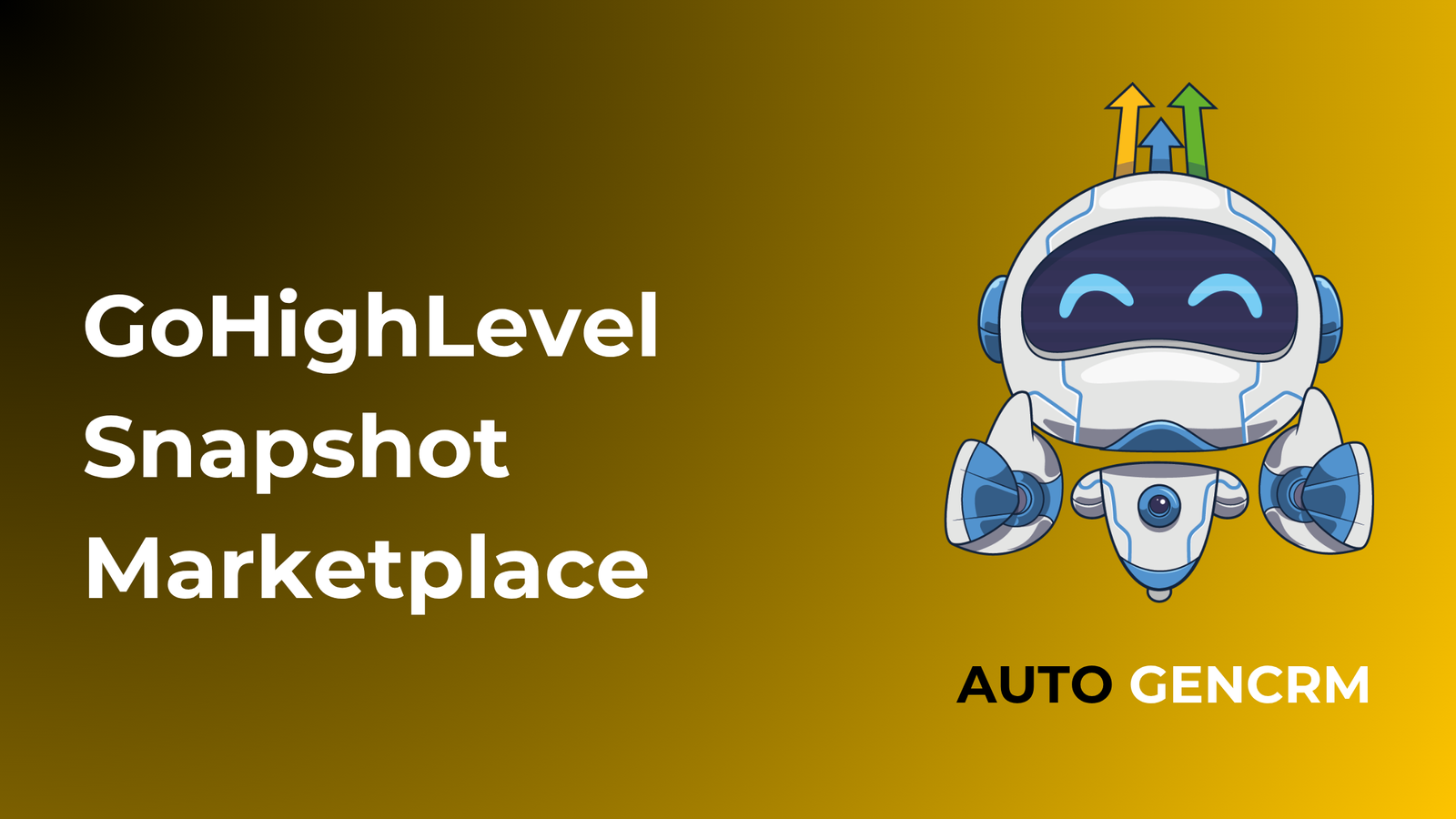The GoHighLevel Snapshot Marketplace is a store where you can buy and sell ready to use HighLevel setups. A snapshot bundles funnels, websites, forms, calendars, pipelines, workflows, and settings. You import it into your account, swap copy and branding, and launch fast. Use snapshots to save build time, standardize delivery, and scale across many clients with fewer mistakes.
What a snapshot is in GoHighLevel
A snapshot is a complete package of HighLevel assets saved together. Think of it as a project in a box. When you import a snapshot, you get pages, forms, calendars, tags, custom fields, pipelines, and workflows with messages and delays already wired.
You can use snapshots for a single brand or for many client accounts. Agencies rely on them to deliver consistent results and reduce setup time.
What the GoHighLevel Snapshot Marketplace offers
The marketplace lists snapshots from trusted creators and agencies. Most products include:
- Industry specific funnels and sites
- Forms and surveys with clean field mapping
- Pipelines with clear stage names
- Workflows for email and SMS follow up
- Calendars with reminders to reduce no shows
- Basic reporting with goals and tags

Some sellers add training, checklists, and update support. Pricing varies by scope and license terms.
Who should use the snapshot marketplace
- Agencies that deliver similar outcomes across many clients
- Freelancers who want to speed up builds and improve quality
- In house teams that need a standard playbook for multiple locations
- New HighLevel users who want a proven starting point
If you rebuild the same funnel or workflow more than twice, a snapshot is often the faster and safer choice.
How to choose a quality snapshot
Use this checklist before you buy.
- Clear scope
Read the summary. Confirm it covers your use case such as lead gen, bookings, or online sales. - Asset list
Look for pages, workflows, pipelines, calendars, and forms. More is not always better. Focus on essentials that support the main goal. - Industry fit
Pick a version for your niche. Dental, home services, coaching, real estate, and local retail each have different needs. - Data mapping
Confirm that tags and fields are standard and easy to understand. Clean data keeps reporting accurate. - Workflow logic
Check that the sequence is short, with goals that stop messages once a prospect books or buys. - Updates and support
Look for notes about version updates and install help. Ask how long updates are provided. - Reviews
Favor sellers with real feedback and clear examples.
How to install a snapshot the smart way
- Create a new sub account
Import into a sandbox first. This keeps your live data safe. - Import the snapshot
Follow the seller instructions. Watch for required assets such as custom values or integrations. - Set global values
Add brand name, logo links, phone, email, and address. Use custom values so these details update everywhere. - Connect email, SMS, and phone
Wire your providers. Send a test email and a test text from inside a workflow. - Review pipelines and stages
Keep stage names simple. New, contacted, booked, no show, won. Delete stages you will not use. - Brand the pages
Swap colors, images, and copy. Keep layouts clean and mobile first. - Tune the workflow
Set delays and tone for your sales cycle. Add a goal for appointment booked or payment made. - Place the calendar
If your offer is a call or demo, put the calendar on the thank you page or as a next step. Add one reminder the day before and one one hour before. - Turn on tracking
Add pixel and analytics IDs in funnel settings. Confirm that key events fire. - Run full tests
Submit three test leads. Check tags, fields, tasks, emails, texts, calendar invites, and receipts.
Once the sandbox passes testing, clone to your live sub account and go live.

Customization tips that lift results
- Keep the headline focused on one promise
- Use action text on buttons such as Get the guide or Book your call
- Put a short proof point near each key action
- Ask for the fewest fields on the first form
- Use email and SMS together for speed to lead
- Compress images and test mobile first
Small edits to copy and timing often outperform big design changes.
Common mistakes and simple fixes
Mistake. Importing directly into a live account.
Fix. Always test in a sandbox sub account first.
Mistake. Leaving placeholder tags and fields.
Fix. Map to your standard tags and fields before launch.
Mistake. Long forms on the first step.
Fix. Start with name and email. Add phone only if a call is next.
Mistake. No goals in workflows.
Fix. Add goals so messages stop when someone books or buys.
Mistake. No task ownership.
Fix. Create stage based tasks and assign an owner for hot replies.
Mistake. Slow pages on mobile.
Fix. Reduce media size. Remove blocks that do not support the main action.
What to measure after launch
- Landing page conversion rate
- Cost per lead and cost per booking
- Time to first reply
- Reply rate on the first text
- Show rate for calls
- Close rate by source
- Revenue per lead
Review twice a week for the first month. Change one element at a time. Start with the headline and the first follow message.
Selling your own snapshots
If you build strong systems, you can list them in the marketplace. Follow these steps.
- Document the outcome
Describe who it is for and the result it creates. - Clean the data layer
Standardize tags, fields, and custom values. Remove brand specific items. - Bundle support assets
Add a setup checklist, a short video, and copy prompts for emails and texts. - Set license terms
Decide on single brand, agency, or unlimited use. Be clear and fair. - Offer updates
Plan a simple update schedule so buyers trust your product over time.
Great sellers earn recurring revenue while helping others launch faster.
When a snapshot is not enough
Snapshots are a strong starting point. You still need unique copy, a clear offer, a trained team, and a scorecard to guide edits. If your process requires heavy custom systems, consider a custom build using the snapshot only as a base.
Next steps
If you want help picking the right snapshot, installing it cleanly, and tuning it for better bookings and sales, our team at Autogen CRM can do the full setup for you. We can also package your best builds as a snapshot so you can roll them out across many accounts with confidence. Start by reaching out through our site and we will map your fastest path to launch.

